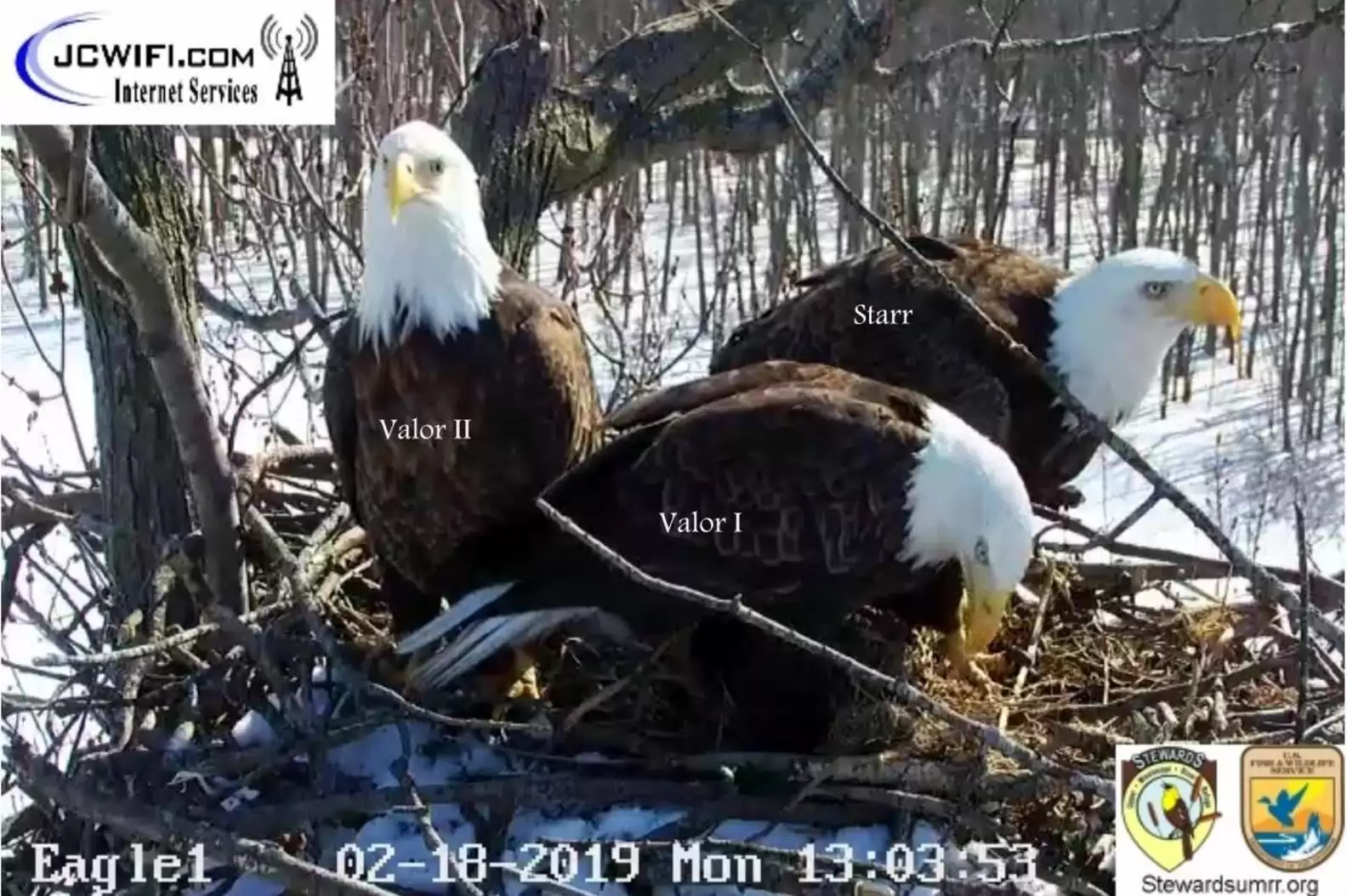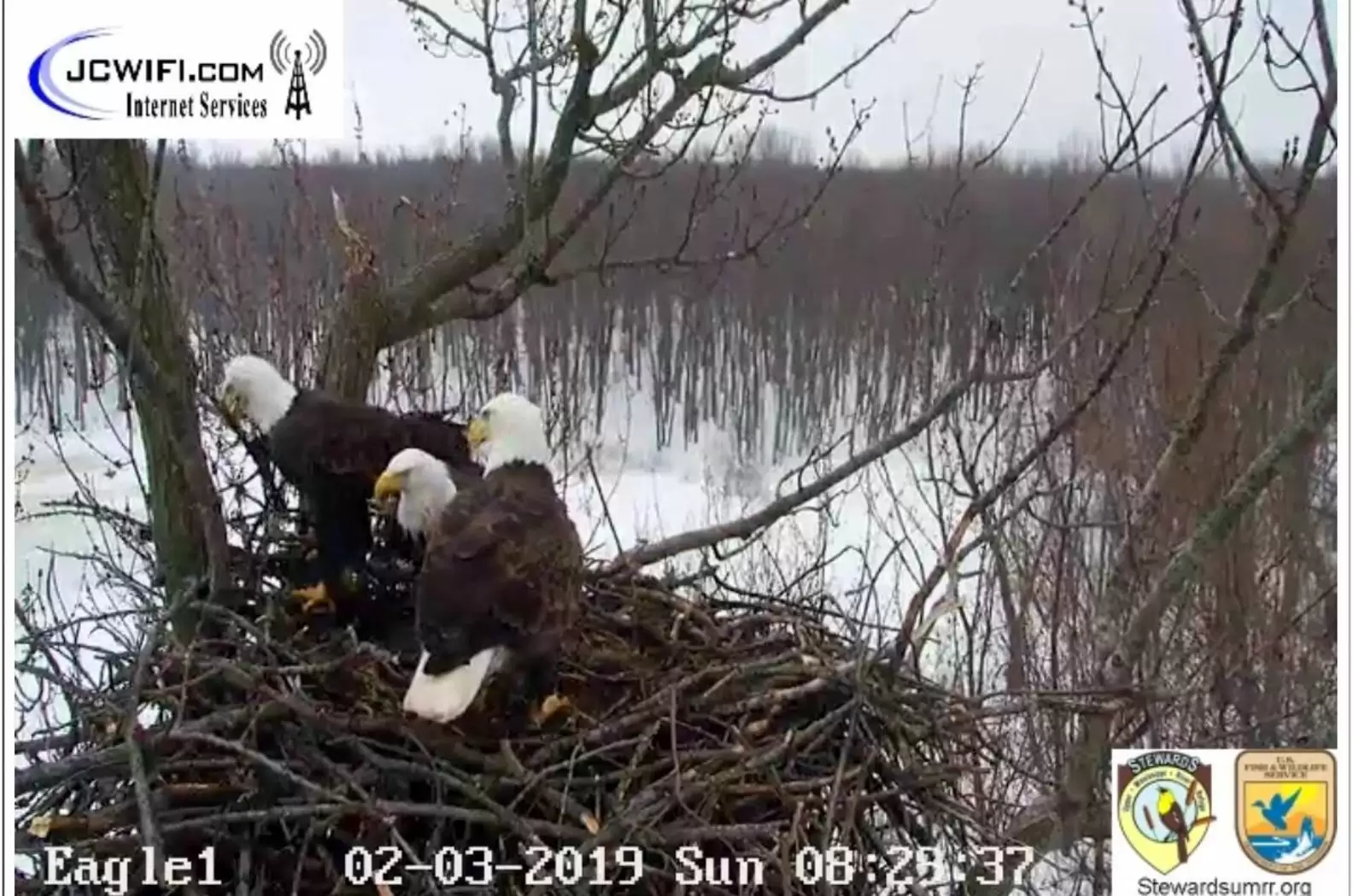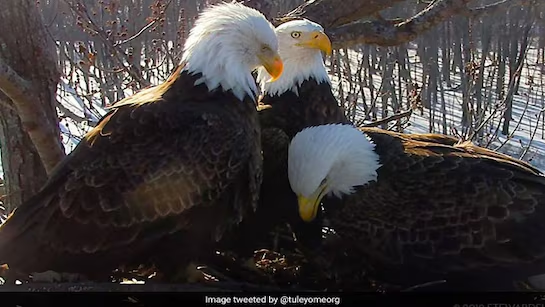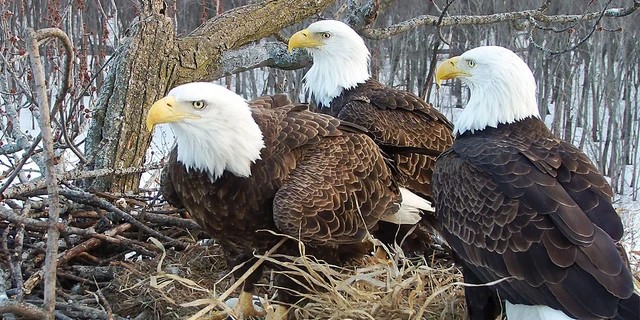In a towering nest on the Mississippi shoreline, a rare family arrangement has captured imaginations: three bald eagles — two males and one female — are working together to raise eaglets in a cooperative parenting setup.
The female, named Starr, pairs with two male eagles known as Valor I and Valor II. All three take turns building the nest, incubating eggs, hunting, and caring for their eaglets. What makes this trio especially extraordinary is that both males are not just helpers — they seem equally involved in mating and parental duties.
Historically, bald eagles form monogamous pairs and fiercely defend their territory. But in this unusual case, Valor I and Valor II remained together after their first mate, Hope, disappeared. Rather than splitting, the two males stayed near the nest, and later courted Starr. The result: a three-adult family working side by side.

This nest is located within the Upper Mississippi River National Wildlife Refuge in Illinois, and has been watched via livestream by supporters around the globe. The refuge team reports that cooperative nesting among bald eagles is extremely rare. While nest helpers appear in some bird species, having two males actively coparenting is almost unheard of among raptors.

Observers note how all three adults coordinate. On some days, Valor I may stay on the eggs while Valor II and Starr hunt. On others, they swap roles — incubating, rearranging sticks, or defending against intruders. The eaglets benefit from multiple adults providing food, protection, and attention.
There’s still mystery about the exact paternity. Biologists cannot definitively say whether both males fathered the chicks, but mating behavior suggests it’s possible. Regardless, the effort is undeniably collaborative.
This trio reminds us that nature sometimes surprises us. Animals often behave in ways that transcend our expectations. The traditional model of two-parent systems doesn’t always capture the full range of what life in the wild allows.
For wildlife lovers, the image of three eagles perched side by side — each caring for their young, each taking part — is powerful. It challenges assumptions, celebrates flexibility, and shows community in action. These eagles are not symbols or spectacles: they are living, breathing teachers of cooperation, reminding us that the wild is more fluid and surprising than we often believe.


